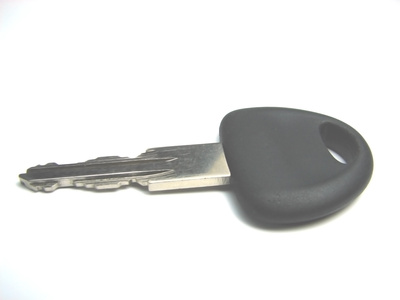
Transponder keys emit a special signal to the ignition to let it know that the right key is in the lock. The signal receiver in the ignition is known as an immobilizer.
Car insurance underwriters motivated car companies to install transponder immobilizers starting in the late 1990s in Germany. The German insurance underwriters stated that in their opinion, there was no reason for an electronic security system not to be installed on modern cars. This idea spread to the United States with American insurance underwriters insisting on the same standards that the German car manufacturers had put into place.
Imagine a sentry standing guard, asking anyone who wants to enter their protected territory, "Friend or foe?" To prove a person's identity, the sentry might ask to see some identification to verify the person's identity. This is about the same way an immobilizer and a transponder key work. The immobilizer sends a signal through a burst of radio frequency energy to which the key's chip is attuned to. This causes the key to emit a 30-character password, which the immobilizer accepts, allowing the car's ignition to work.
When the wrong key is inserted into the ignition, the immobilizer will not send the proper signal to the starter motor and/or the fuel pump to allow the car to start. Sometimes when the transponder is faulty or the immobilizer malfunctions, the car will run a few seconds and stop. The dealership or a reputable automotive locksmith can tune your car's immobilizer and key to the proper frequencies to make it work properly.
Transponder technology is primarily made by Philips, Texas Instruments and Megamos, all of which have specific guidelines for replacing the keys. High-end luxury cars such as BMW, Mercedes and Volvo often will require a specialized coding for their car keys to further insure against theft. These keys and corresponding immobilizers can be extremely difficult to replace and require you to leave your car at the dealership for up to two weeks.